April 22nd, 2008 · Comments Off on DDT molecule ·
Introduction / DDT molecule / Malaria / World War II
Environmental Problems / Insect Resistance / Begin Using Again? / References
DichloroDiphenylTrichloroethane or DDT is comprised of:
- A chloral hydrate molecule [CCl3CH(OH)2] as the center “stem”
- this molecule has sleep producing properties and is known as “knockout drops” in night clubs.

- The two ends of the molecule are Monochlorobenzene (C6H5Cl)
- basically a benzene ring with a chlorine atom interchanged with a hydrogen
- The monochlorobenzene attaches to the OH group of the chloral hydrate molecule and water is released.

- It is a unique insecticide in that it kills both types of insects
- 2 types:
- 1. insects that chew plants
- these insects are killed with the stomach poison aspect of DDT when they ingest the plant.
- 2. insects that puncture plants and suck out juice
- these insects are killed as soon as they come in contact with the plant.
- It also has a “residual effect” so the effects last for a long time without the need for the area to be resprayed. It can be effective 6 months or more.
- DDT is not water soluable so it needed to either be dissolved in kerosene, made into an emulsion, or the grains were chemically coated to make a wettable powder.
- Because of its insolubility it is not metabolized quickly in animals. The half life is 8 years, so it takes an animal 8 years to digest half of its total intake of the molecule.
Categories: DDT
Tags: Kimberly Ward —
April 22nd, 2008 · Comments Off on References ·
Ergot to LSD | Discovery| Chemical Structure | How It Works | LSD’s Affect on History | History’s Affect on LSD | References
Baker, R. W., Chothia, C., Pauling, P., & Weber, H. P. (1972 November 10). Molecular Structure of LSD. Science, New Series, 178, 614- 615.
Barron, F. (1967). Motivational Patterns in LSD Usage. In Richard C. DeBold (Ed.) & Russell C. Leaf (Ed.), LSD Man & Society. (pp. 3-19). Middletown, Connecticut: Wesleyan University Press.
Cohen, S. (1968). The Beyond Within: The LSD Story. Kingsport, Tennessee: Kingsport
Press.
Couteur, P. L. & Burreson, J. (2004). Napoleon’s Buttons: 17 Molecules That Changed
History. New York: Penguin Group Inc.
Dyck, E. (2005, January). Flashback: Psychiatric Experimentation With LSD in
Historical Perspective. Canadian Journal of Psychiatry. 50(7), 381-389.
Retrieved April 1, 2008, from ProQuest.
Dyck, E. (2007 Fall). Land of the Living Sky with Diamonds: A Place for Radical
Psychiatry? Journal of Canadian Studies. 41(3), 42-68. Retrieved April 1, 2008,
from ProQuest.
Hofmann, A. (1980). LSD- My Problem Child. McGraw- Hill. Found in The Psychedelic
Library. http://www.psychedelic-library.org/child.htm.
Kamen, A. (1987 June 26). Court rules out lawsuit on Army LSD experiment. St.
Petersburg Times. 1.A., Retrieved May 6, 2008, from ProQuest.
Kurland, A. A. (1967). The Therapeutic Potential of LSD in Medicine. In Richard C.
DeBold (Ed.) and Russell C. Leaf (Ed.), LSD Man & Society. (pp. 20-35).
Middletown, Connecticut: Wesleyan University Press.
Leary, T. (1964). Introduction. In David Solomon. (Ed.), LSD- The Consciousness-
Expanding Drug. (pp. 1-21). New York: G.P. Putnam’s Sons.
Levine, C. (1989 July- August). Are There Ethical Exceptions? IRB: Ethics and Human
Research, 11, 5-7. Retrieved May 7, 2008, from JSTOR.
London, P. (1979 December). The Moral Dilemma of Military Psychology [Review of
the book War on the Mind: The Military Uses and Abuses of Psychology]. The
Hastings Center Report, 9, 42-44. Retrieved May 7, 2008, from JSTOR.
Nichols, D. E. (2004). Hallucinogens. Pharmacology & Therapeutics. 131-181. Retrieved
May 7, 2008.
http://www.erowid.org/references/refs_view.php?A=ShowDoc1&ID=6318.
Novak, S. J. (1997 March). LSD before Leary: Sidney Cohen’s Critique of 1950s
Psychedelic Drug Research. Isis. 88, 87- 110. Retrieved May 3, 2008, from
JSTOR.
Savage, D. A. (1987 June 26). High Court Bars Military From Suing U.S. Los Angeles Times. 16. Retrieved May 6, 2008, from ProQuest.
Thomas, C. W., Petersen, D. M., & Zingraff, M. T. (1975 March). Student Drug Use: A
Re-Examination of the “Hang-Loose Ethic” Hypothesis. Journal of Health and
Social Behavior, 16, 63-73. Retrieved May 6, 2008, from JSTOR.
Wakefield, D. (1963). The Hallucinogens: A Reporter’s Objective View. In David
Solomon. (Ed.), LSD- The Consciousness- Expanding Drug. (pp. 40-63 ). New
York: G.P. Putnam’s Sons.
Categories: LSD
Tags: Samantha Weiner —
April 22nd, 2008 · Comments Off on Introduction ·
Categories: Prozac
Tags: Anna Elliott —
April 22nd, 2008 · Comments Off on How Prozac Affected History ·
≈Introduction to Prozac | Discovery of Prozac | Structure and How it Works | How Prozac Affected History | How History Affected Prozac
It is hard to say whether the invention of anti-depressant drugs created a culture that is more accepting toward psychological issues or vice versa. Before the end of the 21st Century it was not acceptable to seek out psychological help; it was seen as a sign of weakness. I would like to think that the creation of Prozac, and other anti-depressant drugs, have caused people to think more about depression. Increased knowledge about depression has helped many people seek help for themselves and others and has increases the understanding of the disease.
The natural advancements in the worlds of biology, chemistry and technology have made created a world that was able to support the use of drugs like Prozac. Our world that is dependent on media and advertising is perfect to support the quick spreading of information that is essential to Prozac’s success. But, many people do not think Prozac is a good thing. Many people believe that Prozac is being abused by people who don’t need it and that Prozac creates a complacent society. The concept of the “Prozac Nation,” is a society that is always popping happy pills and doesn’t care about anything. While this does not have much basis in fact it is true that Prozac does have an affect on the personalities of its users because it affects mental and emotional states.
Another way that Prozac has affected history is that it has created a world that thinks it is normal to medicate children. In the past, children would never have been medicated for behavioral problems, but between the years of 1994 and 2002, the rate of children ages 5 to 12 that used anti-depressants jumped from 2 to 6 percent. Many people believe that this contributes to the early maturation of our children and an increased loss of innocence due to factors such as drug use and negative familial influences.
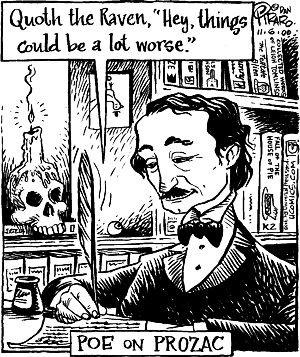
Categories: Prozac
Tags: Anna Elliott —
April 22nd, 2008 · Comments Off on How History Affected Prozac ·
Introduction to Prozac | Discovery of Prozac | Structure and How it Works | How Prozac Affected History | How History Affected Prozac

There were over 23 million prescriptions of Prozac filled last year. The pharmaceutical companies control the research and results of the drugs tested, and are therefore in control of the information about the drug that is available to the public. Prozac is highly advertised because, according to many, there is a push to get people to use and buy it. This is the basis of the main debate surrounding Prozac: that the pharmaceutical companies are “selling diseases” in to create a market for their drugs. The people who earn money when Prozac is sold are the same people who publish information about Prozac and conduct and report the information from its trials. Many people believe that pharmaceutical companies are no longer concerned with helping people out, and just concerned with making money.
The social environment has switched from the Freudian world of talk therapy to our technologically advanced culture that looks to biology to solve its problems. In the past, psychodynamic and psychoanalytic therapy were the two main methods of treating patients. Both methods aimed to delve into the unconscious in oder to discover what was ailing a patient. The Thalidomide scare of the 1950s spurred a change in the way that drugs were created and prescribed. Drugs were now only to be used for people who has legitimate diseases, which inevitably led to an an extreme increase in the occurance of psychological diseases. In the 1950s, 50 out of every million people were diagnosed with depression; now that statistic has risen to 100,000 out of one million.
Essentially, the new way in which we have come to think about psychological diseases has led to the prolific use of Prozac. Our society has bred the perfect atmosphere for the use of Prozac. The common idea that popping pills can solve all of life’s problems and our society’s knack for easy solutions cannot be denied as a factor contributing to the prolific use of Prozac.
Also our society now has become one that requires Prozac. In the past, people were more healthy and less stressed. But now our culture is so face-paced that no one is satisfied with their lives and are always striving for more. This has created a niche for the use of Prozac because it is now necessary.


Categories: Prozac
Tags: Anna Elliott —
April 22nd, 2008 · Comments Off on History’s Affect on LSD ·
Categories: LSD
Tags: Samantha Weiner —
April 22nd, 2008 · Comments Off on LSD’s Affect on History ·
Ergot to LSD | Discovery| Chemical Structure | How It Works | LSD’s Affect on History | History’s Affect on LSD | References

LSD brought about a significant amount of psychological research in the 1950s and 1960s. One particular area of Scientific research included the fundamental hypothesized that experimenting with LSD could have been able to help us understand permanent psychosis, as using LSD often produces feelings of psychosis.
It is also undeniable that LSD created and heavily influenced the environment of the 1960s in America. It was the drug of the youth and the rebellious. Many famous icons including the Beatles and Timothy Leary took LSD for creative and religious inspiration.
LSD’s association with Student Riot groups and other youth groups fighting to end the Vietnam War ultimately led to a nation wide “war on drugs.” Drug policy was created and enforced, with LSD at the top of the list of Schedule 1 drugs.
Categories: LSD
Tags: Samantha Weiner —
April 22nd, 2008 · 2 Comments ·
Introduction to Prozac | Discovery of Prozac | Structure and How it Works | How Prozac Affected History | How History Affected Prozac

It is believed that depressed is caused by a deficiency of the brain chemical serotonin. Prozac works by binding to the reuptake site in the neurotransmitter. This results in an increased duration of action time of the released serotonin. Due to the increased time of action, the serotonin is forced to continually bounce against the serotonin receptors, increasing the feeling of happiness.
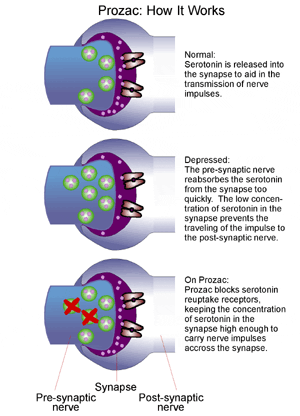
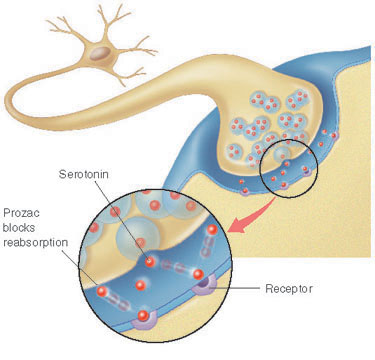
Categories: Prozac
Tags: Anna Elliott —
April 22nd, 2008 · 2 Comments ·
Ergot to LSD | Discovery| Chemical Structure | How It Works | LSD’s Affect on History | History’s Affect on LSD
Because of their similar shape, it is not difficult to see how LSD could bind to serotonin receptors in the brain.
Serotonin LSD 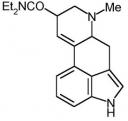

Biological Effects:
-Stimulates sympathetic nervous system
-Dialation of Pupils
-Increased body temperature
-Rise in blood- sugar levels
Categories: LSD
Tags: Samantha Weiner —
 I
I
ntroduction to Prozac | Discovery of Prozac | Structure and How it Works | How Prozac Affected History | How History Affected Prozac
Prozac is an anti-depressant that is classified as an SSRI. An SSRI is a Selective Serotonin Reuptake Inhibitor. Prozac’s chemical name is Fluoxetine Hydrochloride and is usually used to treat depression. The symptom of depression that Prozac aides in curing is the “blue mood” feeling that is universally felt in depressed patients. While it is most frequently used as an anti-depressant, Prozac is also used to treat obsessive compulsive disorder, anxiety, panic disorder and most eating disorders.
It is important to understand a bit about depression itself in order to understand why Prozac is such an important drug that has had such a great influence on our society. Depression affects its victims physically, psychologically and emotionally. The physical effects of depression include changes in sleep patterns, psychomotor retardation, weight loss, a decreased interest in sex and a general deceleration of normal processes. The main psychological effect of depression is a general loss of interest and concentration, which makes the daily life of a depressed person much more difficult. It becomes much more difficult to complete daily tasks because of this loss of interest and because of the emotional effect, which is sadness. When all the symptoms of depression are combined, it is easy to see why it is such a debilitating disease. Depression not only affects mood, but also almost every facet of life.
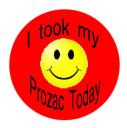
References
Barondes, S. H., (1994). Thinking About Prozac. Science, New Series, 263, 1102-1103.
Bellis, M., (2004). Prozac. Retrieved April 20, 2008. from http://inventors.about.com/library/weekly/
aa980225.htmDepression.
Bower, B., (1994). Antidepressants May Alter Personality. Science News, 145, 359.
Bower, B., (2006). Prescription for Controversy. Science News, 169, 168-169+172.
Blum, L. M., Stracuzzi, N. F., (2004). Gender in the Prozac Nation: Popular Discourse and
Productive Feminity. Gender and Society. 18, 269-286.
Cheever, A., (2000). Prozac Americans: Depression, Identity, and Selfhood. Twentieth Century
Literature, 46, 346-368.
Crary, W. G., & Crary, G. C. (1973). Depression. The American Journal of Nursing, 73, 472-475.
Degrazia, D., (2000). Prozac, Enhancement, and Self-Creation. The Hastings Center Report, 30,
34-40.
Elliott, C., (2000). Pursued by Happiness and Beaten Senseless Prozac and the American Dream.
The Hastings Center Report, 30, 7-12.
Healy, D., (2000). Good Science or Good Business? The Hastings Center Report, 30, 19-22.
Lemmens, T., (2004). Piercing the Veil of Corporate Secrecy about Clinical Trials. The Hastings
Center Report, 34, 14-18.
McLeod, J.D., Pescosolido, B. A., Takeuchi, D. T., & White, T. F., (2004), Public Attitudes toward
the Use of Psychiatric Medications for Children. Journal of Health and Social Behavior, 45,
53-67.
Ni, Y. G., & Miledi, R., (1997) Blockage of 5HT2C Serotonin Receptors by Fluoxetine (Prozac)
Proceedings of the National Academy of Sciences of the United States of America, 94, 2036
2040.
Travis, J., (1999). By a Nose, Worms Reveal New Prozac Targets. Science News, 156, 196
197.
Vogel, G., (2000). New Brain Cells Prompt New Theory of Depression. Science, New Series, 290,
258-259.
Categories: Prozac · Uncategorized
Tags: Anna Elliott —













